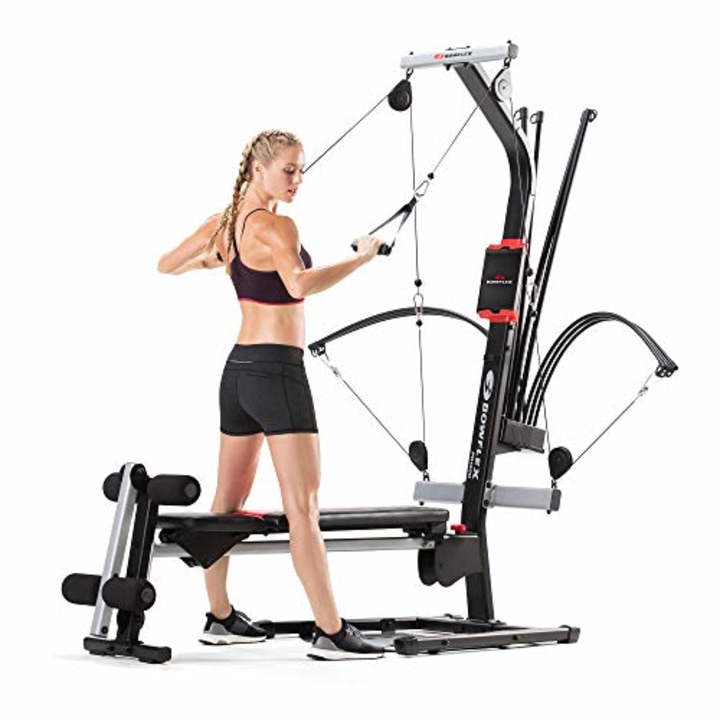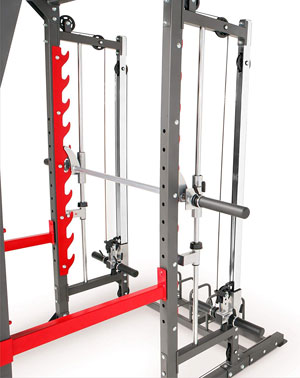
Building a home gym is an excellent alternative to local gyms. It can be constructed in the basement or garage. Many home gyms have multifunctionalities. They can be used as a workout area, relaxation space, or storage. Even a wood accent wall is possible. There are many options. Here are some ideas to create your own home gym. This will make your home-based gym a wonderful place to keep fit and healthy.
Multipurpose space
Make sure you think about your goals when creating a multipurpose space in the home. Do you need a space for intense exercise or yoga? Do you need a place to store equipment? If you have multiple purposes for the space, you may want to buy equipment that can be easily stored. If you don’t already have storage space, it might be worth considering the space beneath your bed or between your couches. This will help you determine what equipment, such as resistance bars or body bars.
Multipurpose equipment
There are many pieces of multipurpose equipment you can use in your home gym. You can purchase a multistation machine, which has two sets of weights for different muscle groups, and an adjustable bench, which is the most common type of home gym equipment. You should have equipment for each muscle group in your home gym, including quadriceps or biceps. You should also be aware that home gyms can come at a range of prices.
Mirrors
A mirror can be hung in your home gym. Drill holes into the wall to install it. Then, slot in J channels. This way, you can secure the mirror easily without damaging the wall. Choose a thicker glass mirror to avoid breaking it. It is a good idea to consider the size of your gym when purchasing a mirror. A wall mirror should not exceed 48 inches to maximize your work space. If you want a large mirror, choose one that is at least four feet long.

Wooden accent wall
The perfect place to use wood accent walls is a home gym. There are many ways to use wood in your home gym. You can buy pre-assembled wood panels for your home gym. They will only require minimal drilling. You can save money on installation and still create an accent wall with these pre-assembled panels. For more ideas on decorating with wood, check out our home gym ideas article.
Climbing wall
Consider the size, height, and material of your climbing wall when you build it for your home gym. There are two options: OSB or plywood. Plywood costs more, but is stronger. OSB traps moisture, which causes it to become weaker over time. Plywood is better for homes that are not exposed to damp weather.
Yoga area
A yoga room in your home gym is a nice way to take a break from your regular routine. You might add potted plants and a decorative rug for a tranquil and serene atmosphere. Rock climbing is a great option for more experienced climbers. This fun activity will engage your muscles in a new way. For garages, rock climbing holds can be great. Home gyms are a great way of turning a dull basement into a useful, inspiring space.
Meditation room
It is important to take into account several factors when creating a meditation room in your home gym. The first thing to consider is the appropriate color scheme. Some prefer white spaces while others prefer using blue and marine colours. You can create a contemporary or traditional look by choosing a color scheme that reflects your personality. The room's overall design must complement the color scheme.

FAQ
What is a good schedule for a 7-day work out?
A seven day exercise program should include cardiovascular training (running or biking), strength exercises (using freeweights, weight machines) and one flexibility/core workout. It is important to complete each activity at least once weekly. Maximum 45 minutes should be allotted for each session.
Cardiovascular Exercises: Running, biking, swimming
The goal is to get in at least 60 minutes of cardio activities per week. You can aim for 75 minutes a week for best results. Cardio exercise can improve blood flow and stimulate muscle development.
Strength Training
Cardio exercises target the heart, lungs and muscles. Strength training targets the muscles, tendons and bones. Strength training helps you burn calories even while resting.
Flexibility & Core Workouts
You can strengthen your entire body by strengthening flexibility and core exercises. Yoga and Pilates are both excellent choices.
What dietary supplement is best for weight loss?
Exercise and diet are key to losing weight. Some people find that certain supplementation can be helpful.
Research suggests that omega-3 fats may aid in weight loss. Omega-3s are essential fats which are crucial for brain function. They are found in fish like salmon, tuna, shrimp and cod liver oil.
Research suggests that green tea may be beneficial in weight loss. Green tea contains catechins, antioxidants that may help boost metabolic rate and encourage weight loss.
What is your favorite workout order?
It depends on what you are looking for. First, lift heavy weights if you are looking to increase muscle mass. Next, you can move onto cardio. For those who want to lose weight or exercise, you can switch from cardio to strength-training.
If you just want to burn fat, start by doing cardio. Then add strength training after.
If you are looking for muscle mass, cardio should be your last option. Cardio stimulates growth hormones and helps build muscle mass.
Before you start your workout, it is a good idea to eat. This will give your muscles more fuel, so they work harder. It makes you feel better when you exercise.
Do weightlifting burn fat faster?
Weight lifting is a great way to burn fat faster but you need to do it together with cardio exercise.
Cardio workouts are a great way to increase the weightlifting benefits.
When done correctly, weightlifting increases your heart rate and oxygen consumption which helps you lose weight.
You will not notice any changes in your body composition if you don’t combine it and cardio.
Statistics
- Are You One of the 20% of Guys (mh.co.za)
- 10 pounds in a month is likely during a lean bulking phase, especially for beginners. (muscleandstrength.com)
- Cardmembers earn 5% Back at Amazon.com with a Prime Credit Card. (amazon.com)
- The PRS enabled risk stratification for overall prostate cancer and lethal disease with a four-fold difference between men in the highest and lowest quartiles (HR, 4.32; 95% confidence interval [CI], 3.16-5.89). (pubmed.ncbi.nlm.nih.gov)
- Candidates and applicants must pass all four tests at 70% (minimum level) to graduate from Basic Deputy U.S. Marshal (BDUSM) Training. (usmarshals.gov)
External Links
How To
What nutrients does a person need every day?
Daily nutrition is essential for men's healthy growth. Your body needs vitamins, minerals and nutrients as well as carbohydrates, proteins, fats, carbohydrate, fiber, and other essential components.
Specific nutrients are also required by the male body at different times during the day. To give you an example, the body uses energy it receives from food to make hormones and antibodies. When you wake up, your body uses protein to repair damaged tissue and build muscles.
At night, your body breaks down fat and stores the extra energy as glycogen. During this time, your body needs fewer calories but still needs sufficient nutrients. You might have an occasional snack during the night if your stomach is feeling hungry.
You need to eat enough carbs and protein when you exercise. If you train hard, you may experience muscle soreness after exercising.
To prevent this, you should eat carbs as well as protein within the first two hours after training. Your body will break down stored glycogen to provide glucose for energy.
You must also eat protein right after you finish your workouts. This prevents the breakdown of muscle tissue that occurs while you sleep.
Lactic acid is produced by the body during periods of intense exercise. The body produces lactic acid when there is too much activity. This can cause fatigue. You can avoid this by eating carbohydrates-rich foods like fruits and veggies.
Carbohydrates provide energy for your body to recover after strenuous exercise.
You may also want to include lean meats and fish, as well as yogurt, cheese, yogurt, beans and nuts in your diet.
All these foods are high-quality sources of protein. Protein promotes muscle growth and repairs damaged tissues. Protein also supplies the amino acids your body requires to make sex hormones, such as testosterone.
You also need enough dietary fats to maintain good skin, hair, nails, and joints. Healthy men require between 20% and 35% of total caloric intake from fat.
Fat helps protect your heart health and prevents cancer. It helps keep your brain working properly.
Vegetable oils such as sunflower oil and soybean oil can provide most of your fat needs.
These oils are high-in monounsaturated, unsaturated fatty acid (MUFAs). MUFAs can lower cholesterol levels and reduce inflammation. They protect your cells and prevent damage from free radicals.
Saturated fats are found in animal products including meat, dairy products, butter and other dairy products. SFAs can increase LDL ("bad") cholesterol as well as triglycerides. They also promote weight gain and belly fat.
Polyunsaturated oils (PUFAs), are found in plant-based foods like nuts, seeds and vegetable oils. PUFAs help improve cardiovascular function, and lower inflammation. They also help control blood sugar and cholesterol.
Erectile dysfunction is common in men with low HDL ("good") cholesterol. Consuming high amounts of saturated fats can increase bad cholesterol and lower good cholesterol.
Red meat and pork are a common source of prostate problems in men who eat a lot. If cooked at high temperatures, the nitrates become nitrosamines. These compounds can cause lung cancer.
Many processed meats are high in nitrites, and other dangerous chemicals. You should avoid them.
The American Heart Association recommends that you limit your intake of red meat to 2 per week. Instead, choose poultry, fish, legumes, tofu, whole grain bread, and cereals.